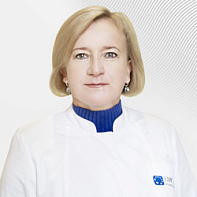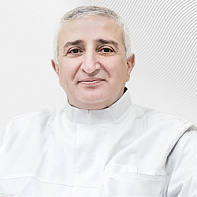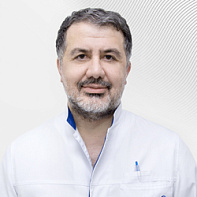Doppler ultrasound examination of blood vessels
Types of ultrasound examinations:
-
Doppler ultrasound examination of the renal artery
-
Doppler ultrasound examination of the arteries of the lower extremities
-
Doppler ultrasound examination of the veins of the lower extremities
-
Doppler ultrasound examination of the abdominal aorta and its branches;
ULTRASOUND DUPLEX SCANNING OF BRACHIOCEPHALIC ARTERIES (UZDS BCA)
Ultrasound duplex scanning of brachiocephalic arteries (BCA ultrasound) is a modern ultrasound method for diagnosing blood vessels, namely the carotid and vertebral arteries supplying blood to the brain, as well as subclavian arteries.
The vessels of the brain are a complex system capable of self-regulation and maintenance of cerebral blood flow. Therefore, only comprehensive diagnostics, including ultrasound scanning, computed tomography, and magnetic resonance imaging, allows timely and accurate selection of treatment tactics and evaluation of its effectiveness.During ULTRASOUND, the anatomy of blood vessels, the condition of the wall and lumen of the arteries are evaluated and blood flow parameters are simultaneously determined using Dopplerography and color scanning, which makes it possible to obtain a more accurate picture of the condition of blood vessels. UZDS are used to diagnose:
-
atherosclerotic plaques;
-
blood clots in the lumen;
-
arterial tortuosity and dissection.
The initial ultrasound sign of atherosclerosis is not a plaque, but a thickening of the carotid artery wall by a fraction of a millimeter. This indicator is necessarily determined by duplex scanning and is called the thickness of the intima-media complex (CIM). It is taken into account when evaluating the effectiveness of statin treatment and antihypertensive therapy. An increase in CMM of more than 1.0 mm is usually associated with risk factors for cardiovascular diseases: hypertension, diabetes mellitus, smoking, increased blood cholesterol, etc.
Indications for duplex scanning of brachiocephalic arteries are:
-
headache;
-
vertigo;
-
fainting;
-
high or low blood pressure;
-
elevated blood cholesterol;
-
impaired limb movement and sensitivity;
-
visual impairment.
Advantages of duplex scanning of brachiocephalic arteries:
-
highly informative;
-
speed of execution;
-
security (multiple execution option for dynamic monitoring).
Due to its advantages, ultrasound duplex scanning of brachiocephalic arteries is recognized worldwide as one of the main methods of diagnosing vascular diseases. Ultrasound assessment of cerebral circulation, neurosonology, is a relatively new and rather complex field that requires a high level of training and clinical experience from a specialist.
At the European Medical Center, ultrasound duplex scanning of brachiocephalic arteries is performed using the most modern ultrasound systems that allow detecting the disease at an early stage, archiving the results and conducting a comparative analysis of their dynamics. BCA ultrasound is included in the programs of cardiological and neurological examination.
Get help
Specify your contacts and we will contact you to clarify the details.
Doctors

Anastasiya Titova
SP is a specialist in the diagnosis of blood vessels of various localizations, as well as EchoCG, Doctor of the highest category
-

Aleksey Ivanov
Ph.D. of Medical Sciences
-

Tamara Dzhordzhikiya
Doctor of the highest category, Ph.D. of Medical Sciences
-

Vasilevskaya Irina
Pediatric cardiologist, polyclinic, Ph.D. of Medical Sciences
-
.jpg)
Songurov Rashid
-

Pursanov Manolis
Doctor of Medicine, Professor
-
Sopetik Vitaliy
-

Kondrashova Evgeniya
-
.jpg)
Znamenskiy Vladislav
-
.jpg)
Rzaev Farkhad
Ph.D. of Medical Sciences
-
.jpg)
Urbanov Alexander
-
.jpg)
Plakhova Victoria
Doctor of Medicine
-

Safarov Perviz
-

Malyutina Elena
Doctor of the highest category, Doctor of Medicine, Professor
-
.jpg)
Karimova Elena
Ph.D. of Medical Sciences
-

Titov Petr
Head of the Anesthesiology and Intensive Care Unit of the Department of Cardiology and X-ray Endovascular Methods of Diagnosis and Treatment, Doctor of the highest category
-

Ermolaev Pavel
-
.jpg)
Danilenko Sergey
-

Kavteladze Zaza
Scientific Consultant of the Department of X-ray Endovascular Diagnostics and Treatment of EMC, Doctor of Medicine, Professor
-

Anikeva Evgeniya
Head of the Hospital of the Department of Cardiology and X-ray Endovascular Methods of Diagnosis and Treatment
-
Anastasiya Titova
SP is a specialist in the diagnosis of blood vessels of various localizations, as well as EchoCG, Doctor of the highest category
- Specializes in research of the cardiovascular system, including in the framework of surgical vascular pathology, as well as in such pathologies as ACS and oncological cancer
- Field of activity — ultrasound examinations of blood vessels in all regions
Total experience
17 years
Experience in EMC
since 2025




